
Currier and Ives was a successful American printmaking firm based in New York City from 1835 to 1907 headed first by Nathaniel Currier, and later jointly with his partner James Merritt Ives. The prolific firm produced prints from paintings by fine artists as black and white lithographs that were hand colored. Lithographic prints could be reproduced quickly and purchased inexpensively, and the firm called itself "the Grand Central Depot for Cheap and Popular Prints" and advertised its lithographs as "colored engravings for the people". The firm adopted the name "Currier and Ives" in 1857.

Nathaniel Currier was an American lithographer. He headed the company Currier & Ives with James Ives.
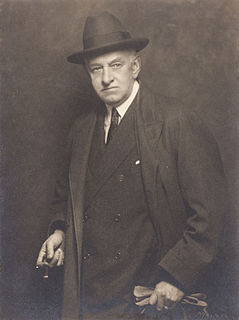
Willard Leroy Metcalf was an American artist born in Lowell, Massachusetts. He studied at the School of the Museum of Fine Arts, Boston, and later attended Académie Julian, Paris. After early figure-painting and illustration, he became prominent as a landscape painter. He was one of the Ten American Painters who in 1897 seceded from the Society of American Artists. For some years he was an instructor in the Women's Art School, Cooper Union, New York, and in the Art Students League, New York. In 1893 he became a member of the American Watercolor Society, New York. Generally associated with American Impressionism, he is also remembered for his New England landscapes and involvement with the Old Lyme Art Colony at Old Lyme, Connecticut and his influential years at the Cornish Art Colony.
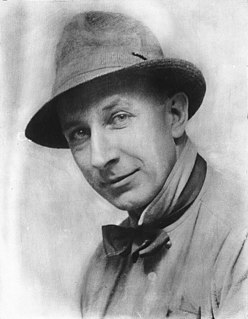
George Wesley Bellows was an American realist painter, known for his bold depictions of urban life in New York City. He became, according to the Columbus Museum of Art, "the most acclaimed American artist of his generation".

Arthur Fitzwilliam Tait was a British-American artist who is known mostly for his paintings of wildlife. During most of his career, he was associated with the New York City art scene.

Fitz Henry Lane was an American painter and printmaker of a style that would later be called Luminism, for its use of pervasive light.

Alvan Fisher was one of the United States's pioneers in landscape painting and genre works.

Louis Maurer was a German-born American lithographer, and the father of the American painter Alfred Henry Maurer. He was the last surviving artist known to have been employed by Currier and Ives. Prior to his death, Maurer was extensively interviewed about the firm by collector and connoisseur Harry T. Peters for his book Currier & Ives, Printmakers to the American People.
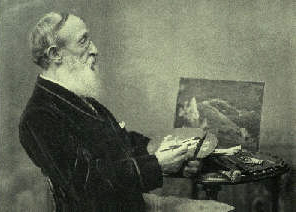
Benjamin Champney was a painter known for his role in White Mountain art of the 19th century. He began his training as a lithographer under celebrated marine artist Fitz Henry Lane at Pendleton's Lithography shop in Boston. Most art historians consider him the founder of the "North Conway Colony" of painters who came to North Conway, New Hampshire and the surrounding area during the second half of the 19th century. His paintings were often used to make chromolithographs that were subsequently sold to tourists who could not afford Champney's originals. He exhibited regularly at the Boston Athenæum and was a founder of the Boston Art Club.

White Mountain art is the body of work created during the 19th century by over four hundred artists who painted landscape scenes of the White Mountains of New Hampshire in order to promote the region and, consequently, sell their works of art.
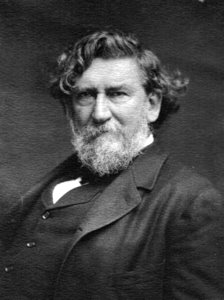
Thomas Satterwhite Noble was an American painter as well as the first head of the McMicken School of Design in Cincinnati, Ohio.
Karl Zerbe was a German-born American painter and educator.

William Jennys (1774–1859), also known as J. William Jennys, was an American primitive portrait painter who was active from about 1790 to 1810. He traveled throughout New England seeking commissions in rural areas and small towns.

John Henry Bufford (1810-1870) was a lithographer in 19th-century Boston, Massachusetts.

Pendleton's Lithography (1825–1836) was a lithographic print studio in 19th-century Boston, Massachusetts, established by brothers William S. Pendleton (1795-1879) and John B. Pendleton (1798-1866). Though relatively short-lived, in its time the firm was prolific, printing portraits, landscape views, sheet music covers, and numerous other illustrations. The Pendleton's work might be characterized by its generosity—each print contains a maxima of visual information designed for graphic reproduction.
The New England Art Union was established in Boston, Massachusetts, for "the encouragement of artists, the promotion of art" in New England and the wider United States. Edward Everett, Franklin Dexter, and Henry Wadsworth Longfellow served as officers of the board. The short-lived but lively union ran a public gallery on Tremont Street, and published a journal. Artists affiliated with the union included Chester Harding, Fitz Henry Lane, Alvan Fisher, and other American artists of the mid-19th century.

Albert Gallatin Hoit was an American painter who lived in Boston, Massachusetts. He painted portraits of William Henry Harrison, Daniel Webster and Brenton Halliburton.
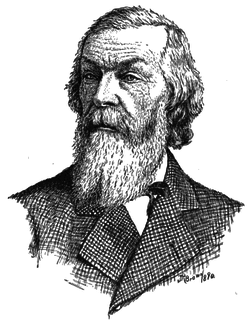
Benjamin Franklin Nutting was an artist in Boston, Massachusetts, in the 19th century. He taught drawing in local schools, published do-it-yourself drawing instruction materials, and showed his artwork in several exhibitions.

Prentiss Taylor was an American illustrator, lithographer, and painter. Born in Washington D.C., Taylor began his art studies at the Corcoran Gallery of Art, followed by painting classes under Charles Hawthorne in Provincetown, Massachusetts, and training at the Art Students League in New York City. In 1931, Taylor began studying lithography at the League. Taylor interacted and collaborated with many writers and musicians in his time in New York in the late 1920s and early 30s. This was in the emergence of the Harlem Renaissance. Among his close friends and colleagues were Langston Hughes and Carl Van Vechten.

Ture Bengtz (1907–1973) was a Finnish-American artist associated with the Boston Expressionist school, an influential teacher at the School of the Museum of Fine Arts in Boston, and director of the Art Complex Museum in Duxbury, Massachusetts. He also had a television show, "Bengtz on Drawing," on Boston's PBS station in the late 1950s.






















